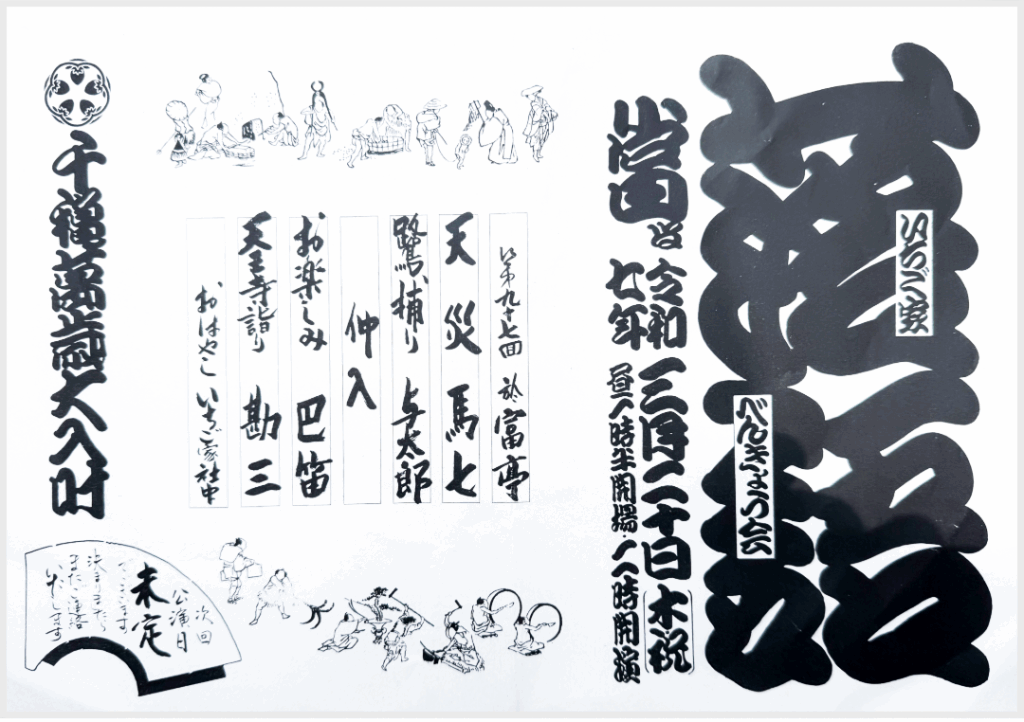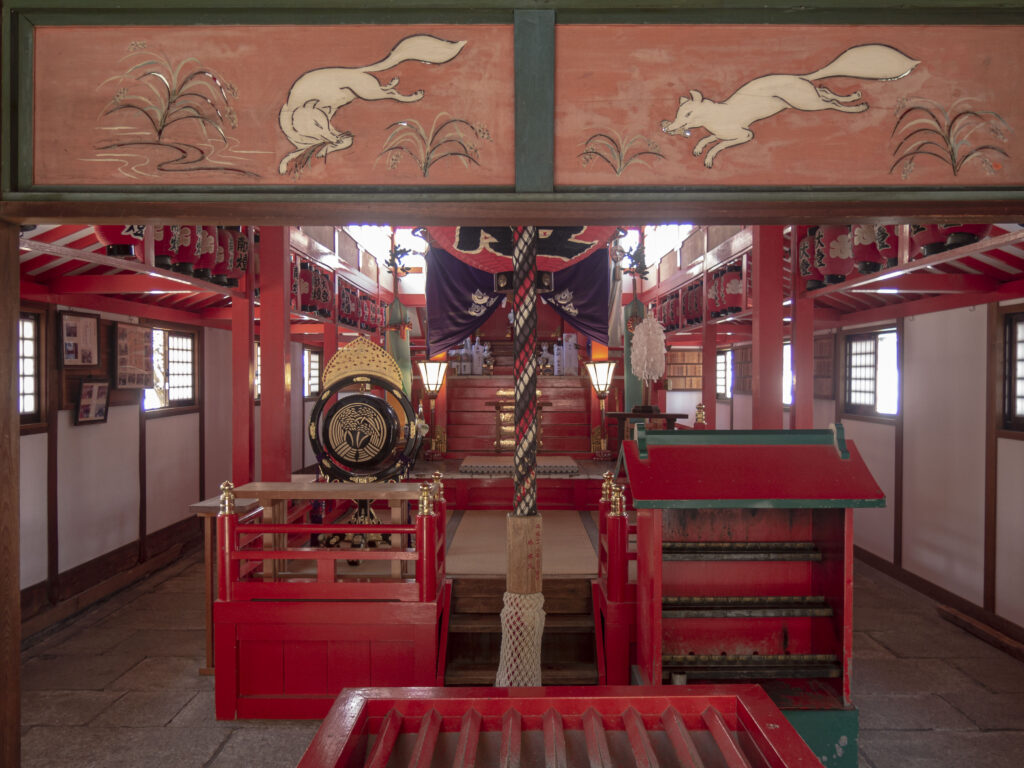Kōzu-gū is a Shinto Shrine in Ōsaka, Japan. It honors Emperor Nintoku, the 16th emperor who reigned from 313 to 399. In 866, Emperor Seiwa, the 56th emperor, became interested in this place. He ordered a search for the old capital’s ruins. A shrine was built on the site. This became the Kōzu-gū shrine. During Emperor Ōgimachi’s reign (from 1577 to 1586) changes happened. Toyotomi Hideyoshi was building Ōsaka Castle then. The shrine was in the castle area. In 1583, the shrine’s shintai was moved. It went to Himekoso Jinja. This is Kōzu-gū’s current location.
Kōzu-gū is important for rakugo. Rakugo (落語, literally ’story with a fall‘) is a form of Japanese verbal comedy, traditionally performed in yose theatres. The lone storyteller (落語家, rakugoka) sits on a raised platform, a kōza (高座). Using only a paper fan (扇子, sensu) and a small cloth (手拭, tenugui) as props, and without standing up from the seiza sitting position, the rakugo artist depicts a long and complicated comical (or sometimes sentimental) story. The story always involves the dialogue of two or more characters. The difference between the characters is depicted only through change in pitch, tone, and a slight turn of the head.
The first recording is from the entrance to the shrine at the foot of a staircase, below a building belonging to the shrine, from where the music can be heard.
We went back up the stairs to the shrine to find out who was making the music and what was happening there. We received a friendly welcome and were told that a ‘rakugo’ would begin in 30 minutes. We were allowed to watch the musicians, who played music before and between the individual rakugoka, warm up in a small room behind the actual performance space. I was even allowed to try my hand at playing a shamisen.
The following two recordings are recordings of the musicians warming up for the performance.
The following recording is an excerpt from the moderation before the ‚ragugo‘ of the first speaker. (Out of respect for the artists, we did not record the actual ‘rakugo’ performances.)
(We made the recordings with an iPhone 15 Pro, post-processed with Steinberg Wavelab Elements 11.)


Yaui Inari subordinate shrine in Kōzu-gū Jinja